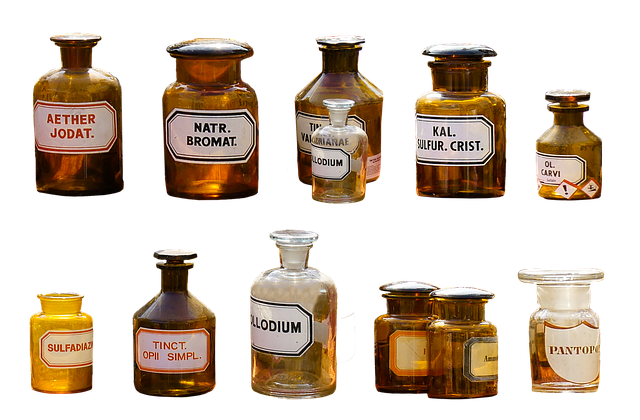Engineered cells, genetic therapies, bioactive scaffolds, and neurostimulation technologies offer advanced pain management solutions. These innovative approaches aim to regenerate tissues, restore natural pain regulation, and decode neural signals for personalized treatments, potentially improving quality of life for millions with chronic pain conditions.
The future of pain management is here, as regenerative medicine offers innovative and promising advancements. This groundbreaking approach aims to revolutionize the way we treat chronic pain by targeting its root causes. From engineered cells creating new tissues to genetic therapies and neurostimulation techniques, these cutting-edge solutions provide hope for improved quality of life. Discover how bioactive scaffolds and advanced stimulation methods are paving the way for effective, long-lasting relief, transforming the landscape of pain management with advanced solutions.
Engineered Cells: Growing New Tissues for Pain Relief
Engineered cells hold immense potential in revolutionizing advanced pain management solutions. By carefully cultivating and programming specific cell types, scientists aim to regenerate damaged tissues and organs, offering a promising avenue for alleviating chronic pain. This innovative approach leverages the body’s inherent ability to heal itself, eliminating the need for long-term medication or invasive procedures.
Regenerative medicine experts are engineering cells to produce new tissues tailored to individual patients’ needs. These cells can be directed to form various types of damaged tissue, such as nerve, bone, or cartilage, providing a sustainable and natural solution to pain associated with degenerative conditions. This technology promises to transform the landscape of pain management, offering targeted, personalized treatments that could significantly improve quality of life for millions suffering from chronic pain.
Genetic Therapies: Targeting Root Causes of Chronic Pain
Genetic therapies represent a promising avenue for advanced pain management solutions, aiming to address the root causes of chronic pain rather than merely masking symptoms. By targeting specific genetic markers associated with pain sensitivity, researchers are developing innovative treatments that can potentially revolutionize the way we approach chronic pain conditions. These therapies offer a more precise and personalized approach, acknowledging that each individual’s experience of pain is unique.
The concept involves introducing targeted genetic modifications or using gene-editing tools to regulate pain-related genes. For instance, scientists are exploring ways to modulate ion channels responsible for nerve signaling, which play a crucial role in transmitting pain impulses. With genetic therapies, the goal is not only to reduce pain intensity but also to restore the body’s natural balance and provide long-lasting relief, ultimately improving patients’ quality of life.
Bioactive Scaffolds: Building Biodegradable Support Structures
Bioactive scaffolds represent a groundbreaking approach in regenerative medicine, offering promising avenues for advanced pain management solutions. These innovative structures are designed to mimic natural tissues while promoting cell growth and regeneration. By incorporating biodegradable materials, scaffolds can safely degrade over time, eliminating the need for surgical removal. This not only simplifies the treatment process but also ensures minimal foreign body reaction, fostering a more natural healing environment.
The versatility of bioactive scaffolds allows them to be tailored to specific tissue types and structural requirements, making them suitable for various pain-related applications. For instance, in the case of spinal cord injuries or nerve damage, these scaffolds can provide supportive frameworks that facilitate neural regrowth, potentially restoring sensory and motor functions. As research progresses, bioactive scaffolds hold immense potential to revolutionize pain management by enabling more effective and sustainable regenerative therapies.
Neurostimulation Advances: Decoding and Modulating Pain Signals
Neurostimulation technologies are at the forefront of advanced pain management solutions, offering a promising avenue for decoding and modulating pain signals within the complex neural network. By targeting specific areas of the brain and nervous system, these innovative techniques can interrupt pain pathways, providing relief for chronic conditions that have proven resistant to traditional treatments.
Researchers are continuously refining neurostimulation methods, leveraging advancements in neuroscience and engineering. This includes the development of more precise stimulation protocols, improved device design, and better understanding of individual patient anatomy. Such enhancements enable tailored treatment plans, ensuring optimal pain reduction while minimising side effects. With ongoing research, we can expect even greater breakthroughs in neurostimulation, expanding its role in transforming pain management practices and improving quality of life for patients worldwide.
The future of advanced pain management looks promising with regenerative medicine innovations. Engineered cells, genetic therapies, bioactive scaffolds, and neurostimulation advances offer targeted, biodegradable solutions for chronic pain relief. These groundbreaking techniques hold the potential to revolutionize care, providing patients with lasting relief and improved quality of life. As research progresses, we can expect to see even more effective advanced pain management solutions emerging in the years to come.
